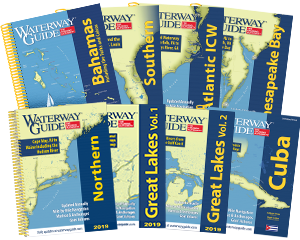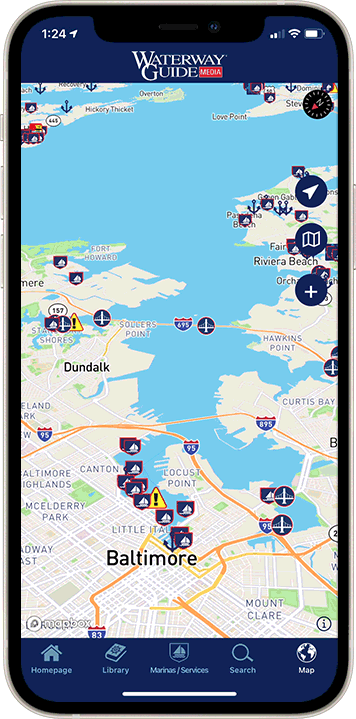Explore Our Latest News & Articles
Dreaming of casting off the dock lines and making a boat your full-time home? Before you start plotting courses and marking anchorages, it's worth taking a serious look at the numbers. Creating a realistic budget is one of the most important steps in making the cruising lifestyle sustainable—and enjoyable—for the long haul. While costs have risen since this was first published, the budgeting principles from the late Robert Reib, author of Skipper Bob's Cruising Comfortably on a Budget, remain just as relevant today. Here's a look at his practical, no-nonsense approach to planning your finances for life afloat.
Note on Costs: This excerpt was originally published in the late 1990s. To help put things in perspective, we've adjusted the numbers to show an average of today's rates and costs. Fuel prices, marina rates, insurance, maintenance, and lifestyle choices are all factors in the equation.
But Can I Afford to Go Cruising?
Can you afford it? Only you and your first mate know for sure. Let's look at some basic facts. I have to assume you are currently living within your budget. I can't tell you how many people tell me, "We don't have a budget!" Sure you do. Whatever you currently spend to live is your budget. It may be $30,000, $50,000, or even $200,000 per year. Normally, this is the total from all your after-tax income, less whatever you currently save. You may or may not make house payments, car payments, credit card payments, etc. In short, you spend what you have coming in. That is your budget.
No matter how you do it, owning a boat creates additional expenses. They include the fuel to operate it, fees to store it, insurance, and maintenance costs. Let's assume for argument's sake that you don't have any substantial money saved to buy a boat. How then would you ever get a boat? (Stealing one is not an option.) We made the same choice many retired people do who want to cruise: we sold our home and bought a boat with the money from the sale of the house. Then, when we had to sell the boat to move ashore and take care of an aging parent, we bought a house with the money from the sale of the boat. But I am getting ahead of myself.
So for the sake of a budget, let's not worry about how you will pay for the boat. Whether you use your savings or sell your house, the boat should be paid for in full when you depart on your cruise. Of course, you can finance a boat, but if you do, you will have to add this expense each month to your budget.
Boating Budget
You pay to live a normal life now. These costs include food, clothing, housing, transportation, medical, etc. If you make no changes in your current lifestyle, your costs to live will increase when you move onto a boat. Why? Because you will be paying for things you did not pay for before.
Fuel is the first concern. You have to pay to move the boat. Fuel costs for moving a large boat 6,000 miles a year can be anywhere from $9,000 to $80,000 per year. This depends on the size of the boat and, more importantly, the size and number of engines in that boat, and how fast you run.
You have to pay to have a place to keep the boat. If you move it all the time and anchor out every night, this cost will be close to zero if you don't use moorings. However, if you keep it in a marina every night, it can cost more than $30,000 per year if you have a 36-foot boat and stay as a transient every night.
If you own a boat, you have to maintain it. Maintenance costs can run from as little as $3,000 if you maintain it yourself, to $20,000 per year if you pay someone else to take care of your 36-foot boat and don't have a major repair.
You also have to insure the vessel, and that will set you back another $3,000 to $5,000 per year, or more. Some elect to operate their boat without insurance.
In other words, if you buy a 36-foot boat and pay cash for it, but change nothing else in your life, you can get by on as little as $15,000 per year—or $1,300 per month—extra in your current budget. Likewise, if you buy a 36-foot boat with large engines and pay cash for it but spend freely while traveling, your extra boating expenses can be as much as $90,000+ per year, or $7,500 per month.
Sample Budget
OK, let's look at a sample budget. My wife and I had lived on a trawler for 7½ years. Below is our budget for the last year we lived on the trawler (1999):
Trawler Budget – 36', 1999
Fuel: $1,000 (750 gallons @ $1.25/gallon)
Rent: $1,360 (4 months at $250 - plus 10 extra stops)
Food: $4,250 (About $7,874 today adjusted for inflation)
Maintenance: $1,200 (annual haul, 7 oil changes, misc.)
Clothing: $500 (minimal light summer clothing)
Medical: $500 (we have prepaid health insurance)
Phone: $360
Insurance: $1,000
Transportation: $600 (two mopeds plus rental car 3 times/year)
Entertainment: $1,800 (cable TV, movies, theme park, etc.)
Miscellaneous: $2,000 (whatever)
Total: $14,570 - (in 1999 dollars)
I knew a couple that got by on as little as $400 (≈$750 today) per month living on a sailboat (1998), anchoring out every night and watching their pennies. I also knew a couple that lived on a 50-foot trawler, maintained a car, and traveled between Florida and Massachusetts twice per year. Their budget was $4,000+ (≈$7,500 today) per month (1997). The one thing these two couples had in common is that they were both very happy with their lifestyles.
You can adjust your budget to suit your own needs and resources. Many boaters we know do not have boat insurance (reduce your budget). Others maintain a car year-round (increase your budget). We also tried to maintain a house for a period while we traveled, but found it too costly. When we wanted something that didn't fit in our budget, one or both of us took a job for a week, a month, or as needed.
My wife is talented in sewing and made cushions and curtains for boats. I repaired boats and installed equipment for other boaters. I also worked three months for H&R Block in Florida. That fit our schedule very well—I worked from January 15 to April 15, then we started north for the summer.
You can live comfortably on a 36-foot trawler in the coastal waters of the eastern U.S. for about $30,000 per year in today's economy. You can obviously live on a much larger boat if you have $50,000 a year to spend.
Another Budget
J. and Marci Kolb moved aboard a 32-year-old sailboat with 6-foot draft in May 2000. They lived aboard full time, starting in Maine, then went south to Florida and the Bahamas before returning to Maine after traveling more than 6,100 miles. Their one-year actual expenses are below:
Kolb Budget – First Year
Fuel – $901
Rent – $2,316
Food – $4,944 (about $9,160 today)
Maintenance – $2,760
Clothing – included in miscellaneous
Medical – $168
Phone – $516
Insurance – $2,496
Transportation – included in miscellaneous
Entertainment – $1,452
Miscellaneous – $1,020
Total: $16,573
The Kolbs spent 202 nights at anchor. They kept very detailed records of their expenses, reported in the September/October 2001 Ocean Navigator Magazine. Their adventure is typical of what we hear along the waterways nearly every day.
While cruising the first year, they sold their home to reduce costs. At one point, they spent two months in a marina in Titusville, Florida, over the Christmas holidays. Otherwise, they moved frequently or anchored out.
They also reported $2,328 in new equipment costs, which I consider part of outfitting, not the cruising budget. As you can see, this couple cruised comfortably on $16,000 per year in 2000. The costs in 2025 are considerably higher and insurance, marina, fuel, and repair costs have increased at a much higher rate than the average inflation factor of 1.9%.
Summary
What you spend on your cruising budget will depend far more on how much you have to spend than on how little you can get by on. Knowing your annual budget, how much you have available to purchase a boat, and your cruising plans will go a long way toward shaping the right boat—and lifestyle—for you.
Even though prices have changed since Skipper Bob first shared these numbers, his core message still rings true: successful cruising isn't about finding the lowest possible budget—it's about aligning your spending with your means, your boat, and your lifestyle. Some cruisers spend modestly and anchor out most nights; others prefer marina life and more frequent travel. Both can be equally fulfilling if the budget supports it.
If you're serious about making the leap, start with a clear picture of what you can comfortably spend each month, then adjust for the realities of life afloat—fuel, dockage, maintenance, and the occasional splurge. Build in a cushion for the unexpected, and be willing to adapt along the way.
For more tips on managing money while cruising, check out:












